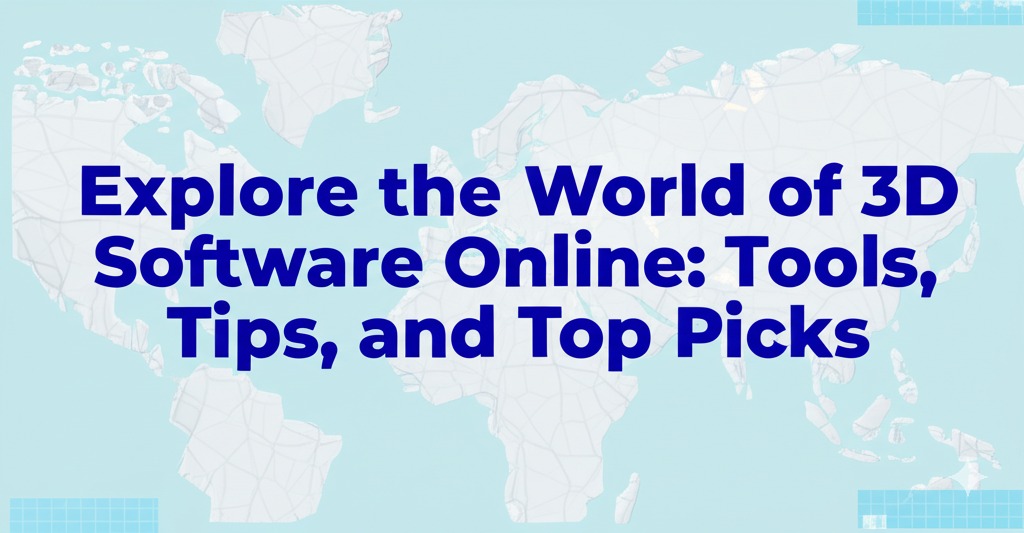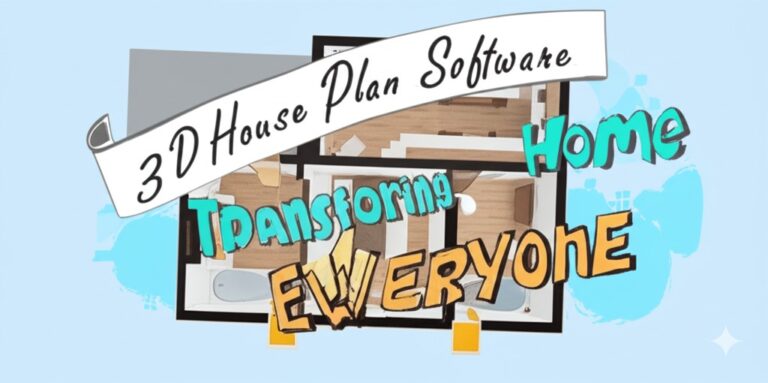Explore the World of 3D Software Online: Tools, Tips, and Top Picks
3D design has taken center stage across industries—from architecture and animation to product design and game development. But you no longer need expensive, bulky software downloads to get started. Today, 3D software online offers powerful tools that are accessible right from your browser.
Whether you’re a beginner exploring 3D modeling or a professional needing cloud-based collaboration, online 3D software makes design more flexible and affordable. Let’s dive into the essentials of online 3D tools, explore the best platforms available, and help you choose the right one for your needs.
What Is 3D Software Online?
3D software online refers to web-based applications that allow users to create, edit, and render 3D models directly in their browsers—no downloads or installations required.
These tools are often cloud-powered, meaning your projects are stored online and accessible from anywhere. Most platforms support drag-and-drop interfaces, intuitive design tools, and integration with other software, making them ideal for learners and professionals alike.
Benefits of Using 3D Software Online
Using browser-based 3D tools comes with several advantages:
- Accessibility: No need to install large software files—design on any device with an internet connection.
- Collaboration: Work with teams in real-time across the globe.
- Cost-effectiveness: Many platforms offer free versions or tiered pricing models, making professional tools more affordable.
- Automatic updates: Always have access to the latest features without manual downloads.
Top Online 3D Software Platforms
Here are some of the best 3D design tools online in 2025, suited for various skill levels and purposes.
🛠️ 1. Tinkercad (Beginner-Friendly)
Owned by Autodesk, Tinkercad is perfect for those just starting with 3D design.
- Features: Simple interface, drag-and-drop shapes, electronics simulations, and coding integration.
- Best for: Hobbyists, students, educators.
- Pros: Totally free, easy to use, quick learning curve.
- Cons: Limited advanced tools for complex modeling.
🏗️ 2. SketchUp Free
SketchUp Free offers an intuitive 3D modeling experience from your browser.
- Features: Pre-built models, direct export to STL, customizable tools.
- Best for: Architects, interior designers, and DIY makers.
- Pros: User-friendly, large online library (3D Warehouse).
- Cons: Some advanced features require the paid Pro version.
🎮 3. Clara.io
Clara.io is a full-featured 3D modeling and animation tool available entirely online.
- Features: Keyframe animation, real-time collaboration, support for multiple formats.
- Best for: Animators, game designers, and 3D artists.
- Pros: No downloads, multi-format import/export.
- Cons: Can be complex for beginners.
🧠 4. Vectary
Vectary combines 3D design with AR (augmented reality) and is ideal for interactive projects.
- Features: Smart 3D components, WebAR support, templates for quick design.
- Best for: Product designers, marketers, and web creators.
- Pros: Modern interface, drag-and-drop simplicity, good for web integrations.
- Cons: Free version has limited exports and rendering features.
What to Look for in Online 3D Software
When choosing the right 3D software online, consider the following factors:
🔧 Functionality
- Does the platform support 3D modeling, texturing, rendering, and animation?
- Are the tools intuitive and well-documented?
💻 Device Compatibility
- Can it run smoothly on your computer, tablet, or Chromebook?
- Does it require a high-speed internet connection?
💰 Pricing
- Is there a free plan or trial?
- What do the premium features include?
🔄 File Compatibility
- Can you import/export STL, OBJ, FBX, or other standard 3D file formats?
- Are there options for 3D printing or AR/VR integration?
Use Cases for 3D Software Online
Here are some real-world applications of browser-based 3D tools:
- 3D Printing: Design prototypes and export STL files to send to a 3D printer.
- Game Development: Model characters and environments for Unity or Unreal Engine.
- Education: Teach geometry, engineering, or art using visual, hands-on tools.
- Marketing & AR: Create interactive product mockups or AR experiences for websites.
Tips for Getting Started
If you’re new to 3D modeling or transitioning from desktop software, here are a few tips to ease the process:
- Start with tutorials: Many platforms like Tinkercad and SketchUp offer free video or guided tutorials.
- Experiment freely: Don’t be afraid to play around—most tools have “undo” buttons and autosave.
- Join communities: Sites like Reddit, YouTube, and platform forums can offer troubleshooting help and creative inspiration.
- Use templates: Speed up your learning with pre-built models or design presets.
The Future of 3D Design Is in the Cloud
With the growth of remote work, online education, and digital fabrication, 3D software online is becoming the go-to solution for creative professionals and hobbyists alike. The convenience of designing from anywhere, coupled with collaborative features and lower costs, makes web-based tools incredibly appealing.

Zain Jacobs is a writer for TheNetUse, providing in-depth reviews, tips, and insights on the latest software apps to help users maximize their digital experience.







